Blurring the Lines Between Mothering and Teaching
By Amy Hodges Hamilton
I rushed into the classroom, organizing my books and notes while welcoming students to class. As I placed my bag under the desk and began the day’s writing exercise, I remembered I hadn’t silenced my cell phone. So I pushed one button and began teaching. After class ended, I wished everyone a happy spring break and raced upstairs to my office where I was meeting an administrator. I only had twenty minutes before I had to leave to pick up my two and a half year old daughter, Grace, so I knew our meeting would be brief. On the way to retrieve Grace, later than I’d hoped, I looked down at my phone and saw that I had several missed calls from her preschool in the two hours since I’d hit the silence button. Her teacher was rocking her in the office, they said. “We hate to bother you, but Grace has been crying since rest time, and this is the first time we’ve ever seen her cry…in eight months…so we need you to come as soon as you can.” Yet I hadn’t, because a small part of me thought it necessary to separate my teaching life and my mothering life.
That is, until one week later when the doctors diagnosed Grace with high-risk Acute Lymphoblastic Leukemia.
As I thought about how to tell the Dean, my colleagues, and my students, I continually questioned why I had been so careful to silence my cell phone before each class and to only talk about Grace and my personal life when I felt it was safe to do so. My research and teaching center on integrating the personal, even traumatic, with the academic, and I always made it a point to respond to writing prompts with my students, even after personal trauma like the miscarriage of my twins thirteen months before Grace’s birth. However, I never shared any of that writing with them for fear I would be seen as soft, non-academic. This fear is one Rachel Hile Bassett addresses in the introduction to Parenting and Professing: Balancing Family Life with an Academic Career (2005). She asks: “Can a woman really have it all—a career and a family?” (xiii). This question is one that is seldom discussed in academia, although research supports that historically women with children are 30% less likely to receive tenure and promotion than men with children in similar demographic groupings (Farber).
I was terrified to go back to campus, really to do anything but lay in the hospital bed next to Grace’s tiny, frail frame. So I did what any feminist would do—I took my Mom with me to work. I walked out of the hospital for the first time in nine days, shielding my eyes from the blinding sun. As my mother tried to fill the time with talk of the blue sky and budding flowers, I thought back to the point at which my professional and personal lives first merged. Shortly after I defended my preliminary examinations and began work on my dissertation on trauma and writing, I learned my major professor, Wendy Bishop, was sick. Maybe even dying. Critical ICU. Acute Lymphoblastic Lymphoma. I was scared to visit her in the hospital, but not because I didn’t want to. I was afraid I wasn’t close enough to her. We had a very professional relationship, and she, too, was careful not to speak of her children or her personal life in our extensive work together. But after she was diagnosed with cancer, Wendy welcomed me in, held my hand, and comforted me. And I was just a student.
Throughout her three-month fight, there were many moments like this between Wendy and me. I took her sunflowers, chocolate muffins, and food as part of a dinner brigade, and I sat in her hospital bed the day after I got engaged. We tried on each other’s rings, and she designated my wedding date, May 15, 2004, her get-well date. One day, I prepared a special pot roast, and because I was so excited to see her, I just got out of the car and walked straight up the cobblestone sidewalk to her front door, without the pot roast in hand. As I reached the steps and realized my mistake, I turned around to retrieve the dinner. I heard, “I told Dean [her husband], ‘I see Amy. Oh, no, there goes Amy. I thought I might be imagining things on all of this medicine, but you’re really here.’” She stood in the doorway, bald and smiling.
At her memorial service a few weeks later, I stood off to the side with my fiancé, Forest, watching the waves splash our toes and holding tightly to his hand. Because Forest’s family knew Wendy personally whereas my relationship with her was more professional, I fought the feeling that I was somehow still an outsider. As my feet shifted in the wet sand, I heard a small voice say my name and looked up to see Wendy’s teenage daughter standing in front of me. In broken words, she asked if Forest and I might ever consider naming a daughter after her mother who, in many ways, had brought us together. Fast forward four years to the birth of Grace Bishop Hamilton. Fast forward two-and-a-half more, and Grace Bishop is diagnosed with cancer, too.
A week after we learned of Grace’s cancer, I walked into the classroom and put my bag under that same desk, but this time I made sure my ringer was placed on the highest setting, just in case the doctors or nurses needed me. Grace had just received her first dose of chemotherapy. “I’m here to tell you more about what you already know to be true,” I began. “Over Spring Break, my daughter Grace was diagnosed with Acute Lymphoblastic Leukemia. Because of Grace’s intensive treatments over the next few months, I won’t be able to teach full-time, although I do hope I’m able to respond to your major writing projects and will come in when she’s having good days.”
My head swam as I attempted to explain her diagnosis, prognosis, surgeries, steroids, all of which were brand new to me, too. I was used to talking happily about developmental milestones and ways to make your own baby food, not about childhood cancer. As I stopped to catch my breath, I glanced to my right and saw that my mom had slow tears running down her cheeks. Somehow, telling my students made it real for both of us.
Through my experiences with Wendy’s losing fight with cancer and Grace’s continued heroic battle, I am more convinced than ever that mothering and teaching do, in fact, have important connections and overlaps. For example, in “Today, She’s Just Mama,” Lorretta Holloway, Professor of English, argues that “when parents have balance, they can see the connections between the one endeavor (parenting) and the other (academic work), even when the paths seem to be on contradictory if not conflicting trajectories” (101). When I went back into the classroom nine months after Grace’s diagnosis, I was determined to be completely transparent with my students. I showed them Grace’s medical website, organized service-learning activities with the Ronald McDonald House, and told them about her chemotherapy schedule and friends of hers who lost their battles with cancer. Based on my willingness to share, the conversations about writing theory and practice opened in ways I could never have imagined possible as a professor.
About mid-way through the semester, I received affirmation that this was, in fact, a good pedagogical decision. One of my students waited after class until we were the only two people left in the room and then she quickly spoke: “I just wanted to say thank you. Thank you for coming back and for sharing Grace’s story with us. My mom died of cancer several years ago, and people in my life, even close friends and family, avoid talking about her or cancer when I’m around. And that silence is so painful, so thanks for not doing that with us.”
The conclusion of Parenting and Professing supports the need for balance: “…A first step to this more humane academy is a shift to a focus on quality rather than quantity in adacemic work…a revised academic culture might choose to emphasize intellectual quality instead of a capatalistic assessment of ‘productivity.’” And one way to do that is to support all faculty in their work inside and outside the academy, even when it means missing an important meeting because your child needs a blood transfusion. Wendy taught me this years ago, and Grace’s fight with cancer solidified what I was already trying to accomplish as a teacher and researcher—balance and openness.
Sometimes, when I’m walking around the classroom workshopping with students or watching Grace bravely receive her chemotherapy, I think of Wendy and all she taught me about blurring the boundaries between the personal and academic. And if I listen, really listen, she is still teaching me.
Works Cited
Farber, S. (1977). “The earnings and promotion of women faculty: Comment.” American Economic Review, 67, 199-206.
Hile-Bassett, Rachel, ed. (2005). Parenting and Professing: Balancing Family Work. Nashville, Vanderbilt University Press.
__________________________________________________
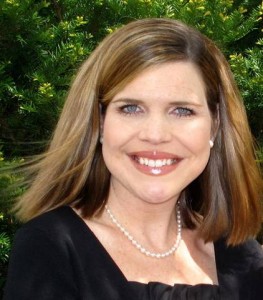 Amy Hodges Hamilton (Ph.D., Florida State University) is Associate Professor of English at Belmont University in Nashville, Tennessee. Amy’s research and teaching interests center on personal writing, feminist theory, and healing and the arts. She has served on panels as a specialist in writing and healing, including presentations at Vanderbilt University Medical Center and a Healing and the Arts panel at Florida State University’s Seven Days of Opening Nights. She co-authored her first essay on the subject of loss and trauma with her mentor Wendy Bishop in Trauma and the Teaching of Writing (NYU Press, 2005). She also served as the founding director of Vanderbilt University’s Writing Studio in 2005-2006 and continues to support writing programs both inside and outside the academy.
Amy Hodges Hamilton (Ph.D., Florida State University) is Associate Professor of English at Belmont University in Nashville, Tennessee. Amy’s research and teaching interests center on personal writing, feminist theory, and healing and the arts. She has served on panels as a specialist in writing and healing, including presentations at Vanderbilt University Medical Center and a Healing and the Arts panel at Florida State University’s Seven Days of Opening Nights. She co-authored her first essay on the subject of loss and trauma with her mentor Wendy Bishop in Trauma and the Teaching of Writing (NYU Press, 2005). She also served as the founding director of Vanderbilt University’s Writing Studio in 2005-2006 and continues to support writing programs both inside and outside the academy.

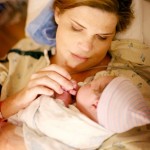
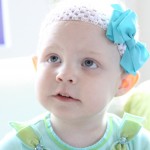
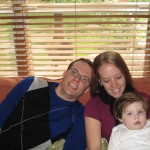
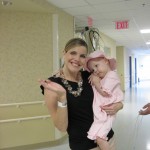
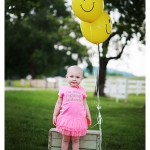



4 Comments